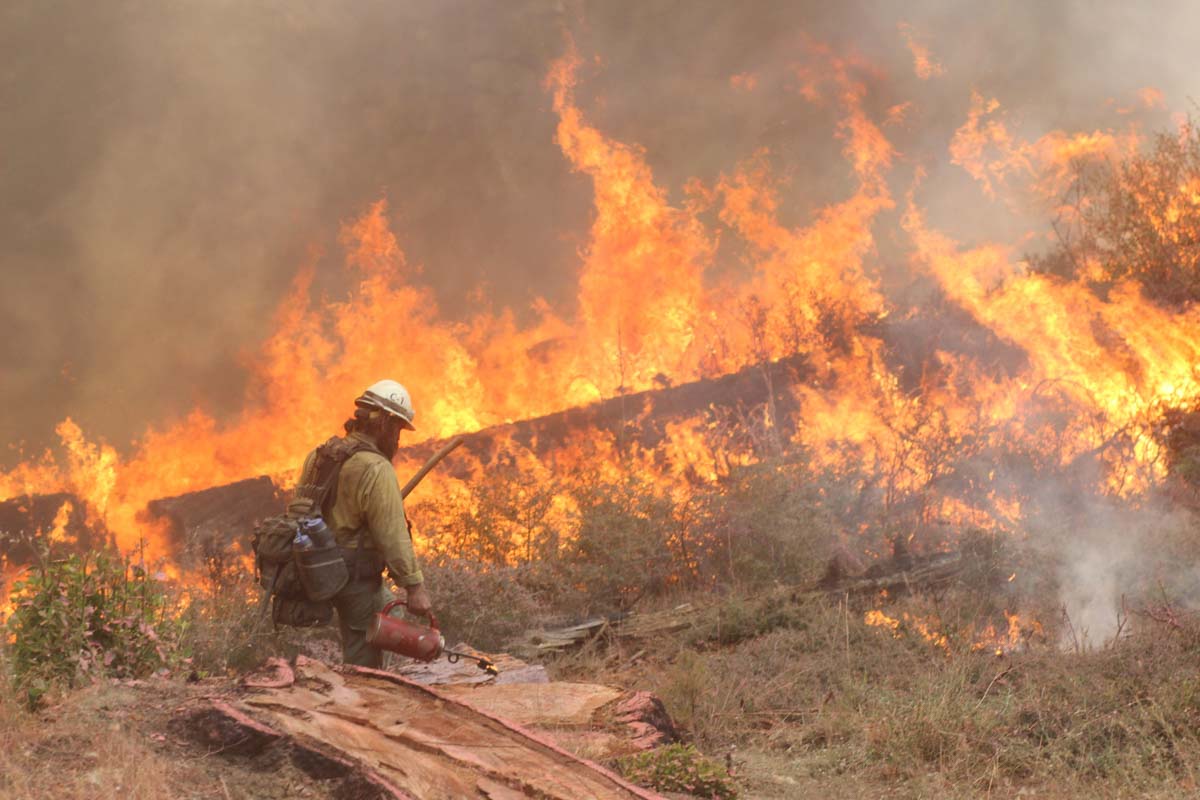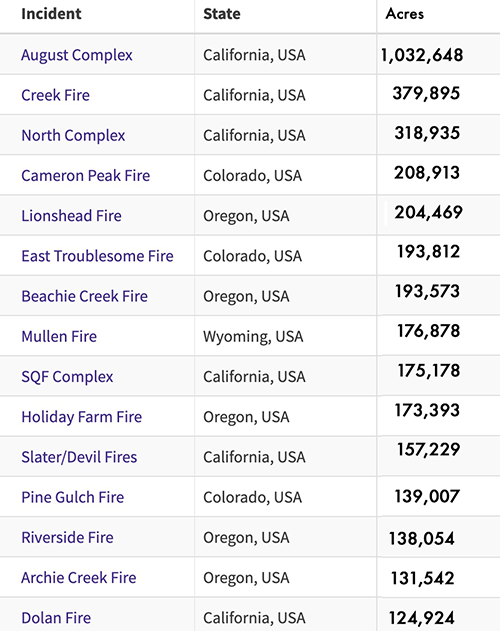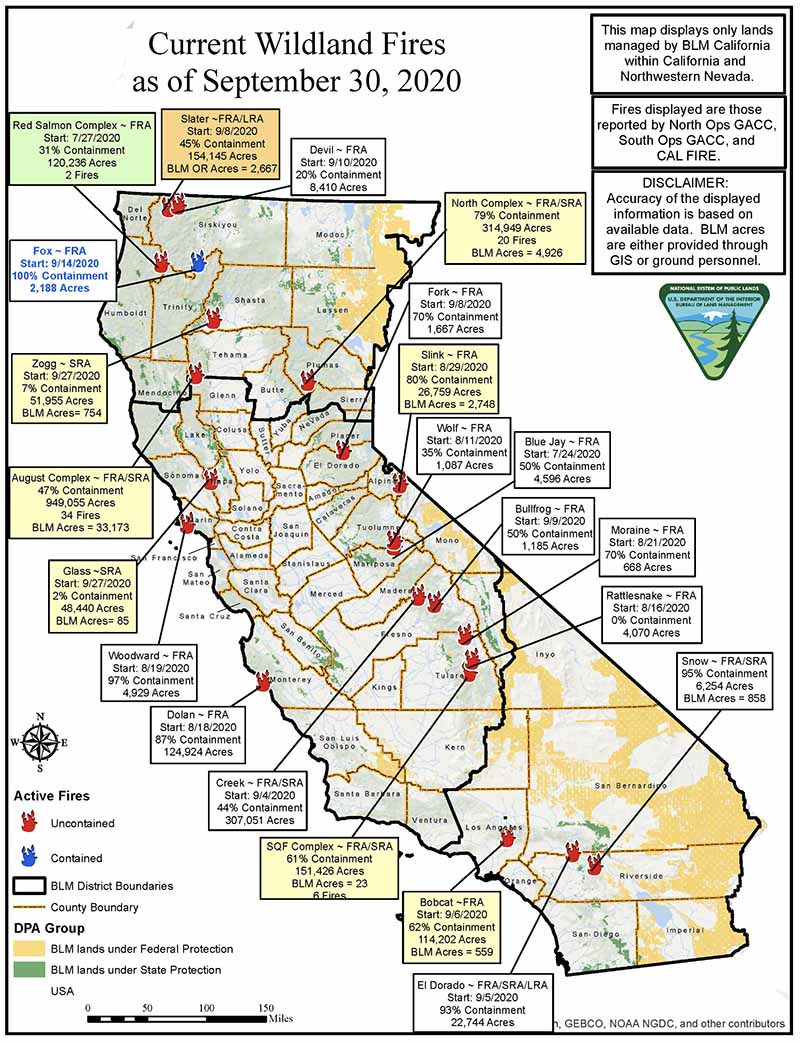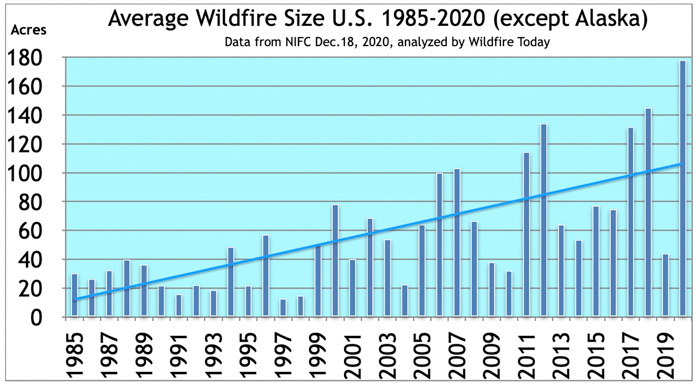Updated December 18, 2020 | 11:50 a.m.

The U.S. Forest Service announced this week that the number of acres burned on national forests in 2020 was the most since 1910.
Nationwide on lands of all ownership 181,234 acres have been reported burned this year in Alaska, and 10,069,213 in the other 49 states as of December 18. In looking at the records from 1985 to 2020 for the lower 49 states, that was the highest total.
The largest fire in 2020 was larger than a million acres and qualifying as “gigafire”, was the 1,032,648-acre August Complex in northern California. While “complexes” are comprised of a group of fires, it is my understanding that the August Complex originated from numerous lightning-caused blazes which all burned together, merging to become one. In looking at national records since 1985, it burned more acres than all of the fires in the 49 states outside of Alaska in 2006.
Any lists comparing fires by size that includes complexes should be looked at with skepticism. Arbitrarily drawing a circle around several separate fires that have not merged, and calling them a complex, should not covert them to one fire for statistical purposes.
Having said that, the information below, showing “megafires” (that exceeded 100,000 acres), comes from InciWeb which primarily has data for fires on federal jurisdiction. Many states and local agencies rarely if ever enter data for their state responsibility fires at the site, so the list does not include some very large fires in California, Washington, and other areas.
These three fires in California were not entered in InciWeb:
- Hennessey, 174,178 acres
- LNU Lightning Complex, 363,218
- Del Puerto, 390,647

Here is how the USFS this week described the 2020 fire year:
The Forest Service was successful in prioritizing early suppression of wildfire ignitions while facing a record-breaking fire year, with the most acres burned on national forests since 1910. The agency’s modeling research on how COVID-19 may spread between firefighters or in communities during response efforts led to new interagency safety protocols to better support fire camp management. The protocols not only successfully minimized the spread of COVID-19 among the agency’s 10,000 firefighters, but early learning suggests the safety measures resulted in additional health benefits to fire crews, reducing ailments common in fire camps, which translated to a healthier and more resilient firefighting workforce available to protect lives, homes, and communities threatened by wildfire.
In 2020, the Forest Service sold more than 3.2 billion board feet of timber, the second highest level in 20 years. The agency also improved forest conditions and reduced wildfire risk on over 2.65 million acres, removing hazardous fuels like dead and downed trees, and combating disease, insect and invasive species infestations.




Thank you for sharing. The 1910 fires were pivotal, cementing the trajectory toward total fire suppression. This year feels very pivotal. What “science” path are we going to follow to align with ecosystem function and social constructs?
I respectfully disagree. In 85 deaths in the Camp Fire isn’t enough to compel change, this summer will not either. The state and federal government has demonstrated their impotence. I had suspected it would be the insurance companies would be the ones that compelled the change, at least in the WUI, and even their efforts are being stonewalled. The status quo is here to stay. Unless of course, you have the resources to treat your own land.
Gino
Interesting. Washington State had at least 2 fires over 100,000 acres that I don’t see in your list. The Cold Springs Fire and the Paradise Hill Fire, which were really one fire that was in 2 different counties.
In addition to California, some other states do not always enter their fire information into Inciweb.
Howdy Steven,
Could be those two fires were mostly on dnr and BLM lands.
Scott
After working in wildland fire for 40 fire seasons and fuel reduction projects. We know the answers, just do it.
You are thinking of the Cold Springs and Pearl Hill Fires.
Cold Springs was BIA, started on the Colville Reservation. When it jumped the Columbia River it became a separate fire managed by Wa DNR. As you noted both went over 100,000 acres.